[Editor’s Note: Army Mad Scientist welcomes back returning guest blogger Ian Sullivan with today’s guest post, addressing the recent resurgence in the use of chemical weapons in the Operational Environment. A number of adversaries have employed chemical agents during the past decade, including the use of traditional choking, blistering, blood, and nerve agents as area weapons, as well as toxic industrial chemicals. New agents have been developed and used as targeted assassination weapons. The possible release of industrial agents, either through accidental collateral damage due to kinetic operations or the direct targeting of plant storage sites is an additional consideration. The possibility of a chemically-contaminated battlespace only gets worse with the power of Artificial Intelligence potentially yielding tens of thousands of novel lethal agents, some of which may fall outside the scope of the current Chemical Warfare Convention. Add to this the weaponization of aerosolized fentanyl, ungoverned by any convention, and The Great War’s scourge is resurgent — Read on!]
 Chemical Warfare (CW) has had something of a resurgence over the past decade, and as we contemplate an Operational Environment (OE) that will include a range of potential adversaries, and everything from large-scale combat operations through a persistent threat from terrorist and extremist organizations, we must conclude that the Army will face a battlespace in which it will encounter chemical weapons.
Chemical Warfare (CW) has had something of a resurgence over the past decade, and as we contemplate an Operational Environment (OE) that will include a range of potential adversaries, and everything from large-scale combat operations through a persistent threat from terrorist and extremist organizations, we must conclude that the Army will face a battlespace in which it will encounter chemical weapons.
 Paradoxically, the use of chemical agents has increased dramatically over the past decade, even though the International Community agreed to ban these weapons under the terms of the 1997 Chemical Warfare Convention (CWC). There are 193 nations which have ratified this treaty, and of our key threat actors, only North Korea has neither signed nor ratified the agreement.
Paradoxically, the use of chemical agents has increased dramatically over the past decade, even though the International Community agreed to ban these weapons under the terms of the 1997 Chemical Warfare Convention (CWC). There are 193 nations which have ratified this treaty, and of our key threat actors, only North Korea has neither signed nor ratified the agreement.
Nevertheless, there has been a massive spike in the use of these weapons, particularly since 2013, when there was relative widespread use of both chemical warfare agents and toxic industrial chemicals (TIC) as weapons during the Syrian Civil War. For example:
-
-
- Syrian government forces have used the nerve agent sarin and crude chlorine bombs dozens of times since 2013 during its brutal civil war.
-
-
-
- Islamic State extremists used TICs and mustard gas in northern Iraq in 2015 and 2016.
-
-
-
- North Korean agents used the nerve agent VX to assassinate Kim Jong Il’s half-brother at the Kuala Lumpur International Airport in 2017.
-
-
-
- Russian agents likely used advanced new nerve agents as assassination weapons. They unsuccessfully attempted to assassinate former Russian intelligence operative Sergei Skripal in the UK in 2018 with a Novichok agent, and likely attempted to assassinate opposition leader Alexei Navalny with a similar weapon in 2020.
-
Prior to this dramatic increase in chemical weapon usage, there had been no recorded use of chemical agents since the Iran-Iraq War in the 1980s.
So, what does this all mean for the OE? It is clear that in spite of international efforts to control these weapons, nations and non-state actors are still using chemical weapons, and there is a very real threat that they will be used as battlefield weapons. The threats we will face will include a variety of weapons, 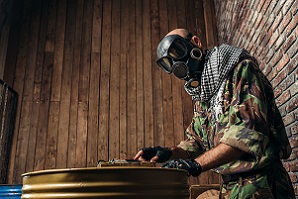 including traditional chemical warfare agents like nerve agents (sarin or VX), blister agents (mustard, lewisite), blood agents (hydrogen cyanide or cyanogen chloride), or choking agents (chlorine, phosgene), to TICs which are released purposefully as weapons (as we have seen in Syria and Iraq) or as a secondary result of a military operation (where a chemical facility is destroyed and an accidental release occurs).
including traditional chemical warfare agents like nerve agents (sarin or VX), blister agents (mustard, lewisite), blood agents (hydrogen cyanide or cyanogen chloride), or choking agents (chlorine, phosgene), to TICs which are released purposefully as weapons (as we have seen in Syria and Iraq) or as a secondary result of a military operation (where a chemical facility is destroyed and an accidental release occurs).
We may also encounter new types of threats. We already have mentioned the new types of nerve agents that Russia has developed and used. We also must be prepared for new and novel uses of CW agents. For example, a team of 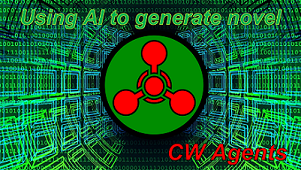 European AI/machine learning experts who work in the drug industry recently ran an artificial intelligence (AI) application to see how easy it would be for “bad actors” to use this revolutionary technology to create novel CW agents. A six-hour run of the AI application resulted in 40,000 potentially lethal new substances, many of which were somehow related to VX. Because they are novel, it is unclear whether all, any, or some of these would be covered under the CWC.
European AI/machine learning experts who work in the drug industry recently ran an artificial intelligence (AI) application to see how easy it would be for “bad actors” to use this revolutionary technology to create novel CW agents. A six-hour run of the AI application resulted in 40,000 potentially lethal new substances, many of which were somehow related to VX. Because they are novel, it is unclear whether all, any, or some of these would be covered under the CWC.
A further new CW “growth area” can be found in the use of pharmaceutical agents as CW weapons. Fentanyl, for example, has been researched as a potential incapacitating agent by a number of nations, and it has been used operationally by Russia in the infamous counter-terrorist action at Moscow’s Dubrovaka Theater in 2002. During that incident, 40 Chechen terrorists held 800 hostages in the theater, and after several days of negotiations failed, Russian security forces pumped aerosolized fentanyl into the theater to incapacitate the occupants. It backfired, and instead left all of the 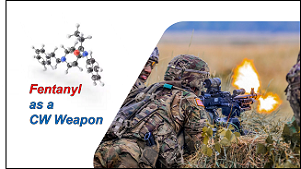 terrorists and 130 of the hostages dead from lethal doses. This operation demonstrates the potential of fentanyl as a military weapon. These types of agents are not covered under the terms of the CWC.
terrorists and 130 of the hostages dead from lethal doses. This operation demonstrates the potential of fentanyl as a military weapon. These types of agents are not covered under the terms of the CWC.
In terms of threat actors, Russia, China, and Iran all claim to ascribe to the terms of the CWC, and have officially declared that any stockpile of CW agents they once possessed are now destroyed. It is, however, likely that each of these restates retains some level of covert stockpile of CW agents:
-
-
- Russia once had the world’s largest stockpile of CW agents, with 40,000 metric tons of agents like VX, sarin, soman, mustard, lewisite, and phosgene. CWC observers confirmed that the Russian stockpile was completely destroyed by 2017. However, their recent use of advanced nerve agents and their continued focus on CW operations within their Army’s NBC Defense troops indicate that Russia likely maintains a credible CW capability, and likely can deliver CW weapons in multiple ways.
-
-
-
- China declared that its offensive CW stockpile was dismantled by 2016, and this has been verified by over 400 CWC inspections. However, as of 2003, the United States alleged that China retained an advanced chemical weapons research and development effort. As noted above, China’s fentanyl effort is not covered under the CWC.
-
-
-
- Iran has always publicly denounced the use of CW agents, particularly as it was heavily targeted by these weapons during the Iran-Iraq War. However, Iran is believed to have created a stockpile that included blister, blood, and choking agents, and potentially even nerve agents. As late as 2021, the U.S. accused Iran of being non-compliant with the CWC and indicated that Iran likely is pursuing pharmaceutical agents for military use.
-
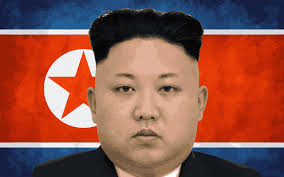 Of all of our potential adversaries, North Korea remains the only one to have never signed the CWC. It is assessed to possess a robust chemical stockpile of somewhere between 2,500 and 5,000 metric tons of CW agent, and it may be capable of producing up to 12,000 metric tons of CW agent. Much of its stockpile likely includes the nerve agents sarin and VX, but it also likely incorporates blister, blood, and choking agents. North Korea has a variety of delivery mechanisms for its CW agents, including ballistic missiles, artillery shells, and by special operations forces. A full-scale conflict on the Korean Peninsula almost certainly would see these weapons used.
Of all of our potential adversaries, North Korea remains the only one to have never signed the CWC. It is assessed to possess a robust chemical stockpile of somewhere between 2,500 and 5,000 metric tons of CW agent, and it may be capable of producing up to 12,000 metric tons of CW agent. Much of its stockpile likely includes the nerve agents sarin and VX, but it also likely incorporates blister, blood, and choking agents. North Korea has a variety of delivery mechanisms for its CW agents, including ballistic missiles, artillery shells, and by special operations forces. A full-scale conflict on the Korean Peninsula almost certainly would see these weapons used.
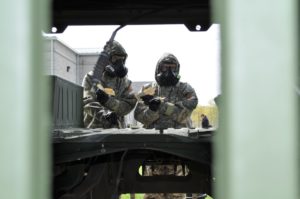
The Russian invasion of Ukraine shows us that large-scale combat operations are not a thing of the past, and likely will be a defining feature of the OE in which the Army will have to operate. This shows us the importance of being prepared for a chemical battlefield. Chemical weapons have been used with more frequency in the last decade, and almost certainly will continue to be used by state and non-state actors alike. Our Army must remain vigilant and prepared to fight and win in a chemically-contaminated battlespace.
If you enjoyed this post, explore the TRADOC G-2‘s Operational Environment Enterprise web page, brimming with information on the Operational Environment and our how our adversaries fight…
…. and check out the following Army Mad Scientist content:
A New Age of Terror: New Mass Casualty Terrorism Threats and A New Age of Terror: The Future of CBRN Terrorism by proclaimed Mad Scientist Zak Kallenborn
Dead Deer, and Mad Cows, and Humans (?) … Oh My! by proclaimed Mad Scientists LtCol Jennifer Snow and Dr. James Giordano, and Joseph DeFranco
Heeding Breaches in Biosecurity: Navigating the New Normality of the Post-COVID Future, by John Wallbank and Dr. James Giordano
Ian Sullivan is the Assistant G-2, ISR and Futures, at Headquarters, TRADOC.
Disclaimer: The views expressed in this blog post do not necessarily reflect those of the Department of Defense, Department of the Army, Army Futures Command (AFC), or Training and Doctrine Command (TRADOC).



